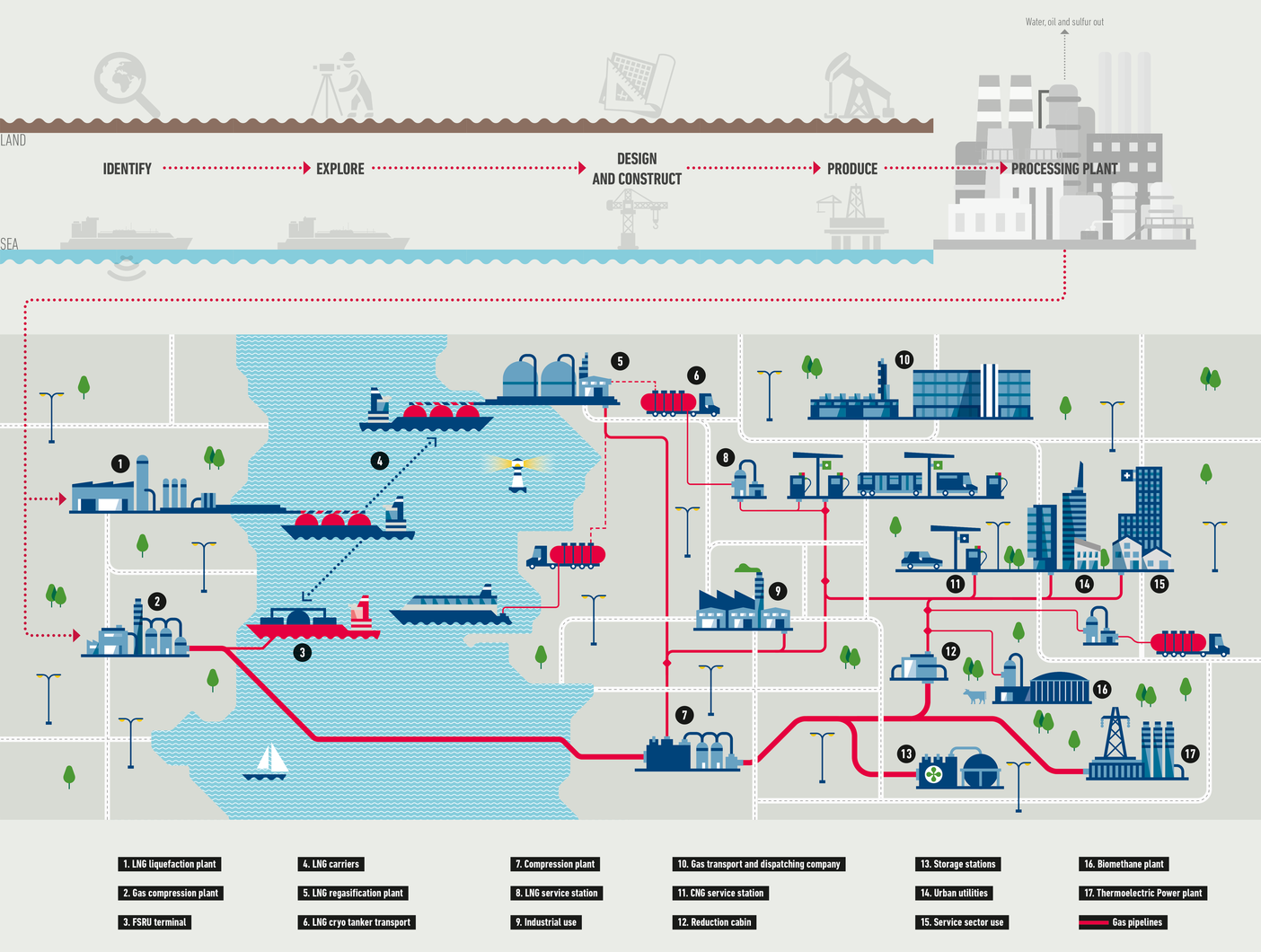Natural gas Supply Chain
Natural Gas
Natural gas is produced from the anaerobic decomposition of organic material. It is found in nature in its fossil state on its own or together with oil and other hydrocarbons.
The main component of natural gas is methane (CH₄). During combustion, most of the methane gas is converted into water vapour and carbon dioxide (CO₂).
Liquefied natural gas (LNG)
Liquefied Natural Gas is obtained by subjecting natural gas to a cooling (-160 C°) and condensation process which reduces its specific volume by around 600 times compared with normal atmospheric pressure.
Compressed natural gas (CNG)
Compressed Natural Gas is obtained by compressing natural gas to less than 1% of the volume it occupies at normal atmospheric pressure. It is conserved in tanks at a pressure of 200-248 bar.
Biomethane
Biomethane is obtained in specific plants, from anaerobic digestion of agricultural biomass or agro-industrial by-products, and the organic fraction of municipal solid waste through a biogas upgrading process. It can be used in the same way as natural gas by being injected into the existing network or as a fuel for road transport.
Floating Storage And Regasification Unit (FSRU)
FSRUs are terminals capable of storing and regasifying natural gas, mounted on ships located in the vicinity of a port area, on the quayside or offshore. They receive liquefied natural gas (LNG) at a temperature of -160°C from other LNG carriers and regasify it (i.e. bring it to a gaseous state) in order to feed it into the onshore transmission network.
- Snam, Sustainability Report (various editions);
